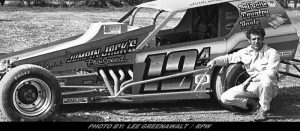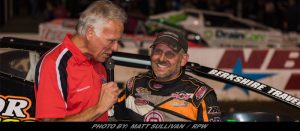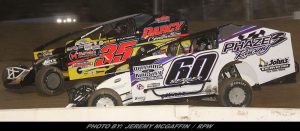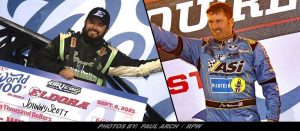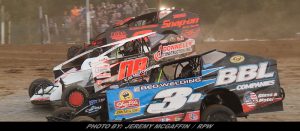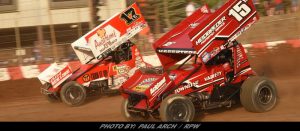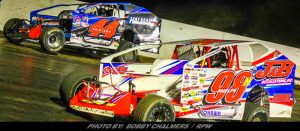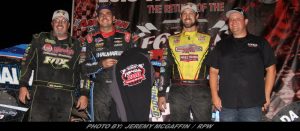My Idea On How To Change The Direction Of Short Track Racing
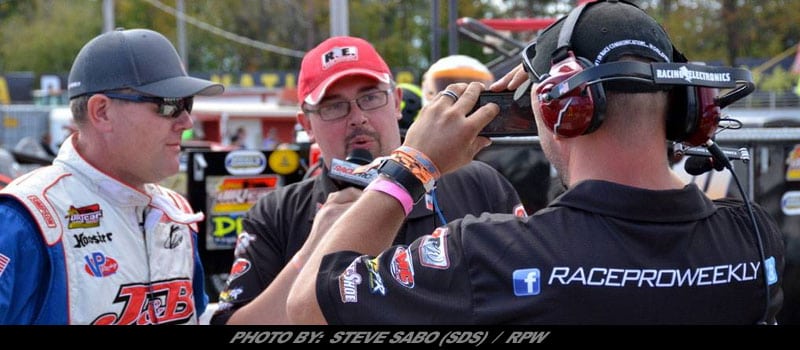

Column By: TOBY LAGRANGE / RPW – GLOVERSVILLE, NY – When something we love or deeply care about is headed in the wrong direction many things usually cross our minds. It is different for everyone but usually we ask ourselves one of the following: what happened, how did it happen and how do we fix it? These popular thoughts can apply to many aspects of the problem.
As is the case in most things we deal with in life there is no one exact way to fix something and if a fix is to be had, it usually comes from mixing ideas together. This applies to many things especially short track racing.
In the case of sports, specifically racing, it seems like everyone cannot wait to make everyone else aware of the problem that they uncovered. I admit, I am one of those who do that. Very few though offer a solution to the problem, let alone a legitimate potential solution. That is where I try to be different, after all what good is publicizing a problem and not offering a solution with it.
As I reflect on racing over the past three plus decades I get a little sad. It seems as though the good old days, which to me mean the days of full grandstands and pit areas, sign after sign of sponsors and good old fashion promoting are over. Sure, there are some tracks in the northeast that are still packed every week and have the right combination to be a success, but not all and not nearly enough.
There are many issues facing local short track racing and if I were to list them all, it would end up looking more like a telephone book than an article. There is one issue that I feel strongly has directly affected the popularity of short track auto racing and not just in upstate New York but region wide.
That issue – enclosed trailers.
When I was a kid growing up on the Knoblauch family homestead that my Grandparents and my Great Grand Father and his children built in the Town of Bleecker I loved seeing a hauler drive by or passing someone’s property with a race car sitting on it or a trailer sitting next to a garage. As the first kid on the school bus and then the last one off, the hour plus school trip each way, each day allowed a lot of thinking time.
I used to always sit next to a window so I could see out, I would look for trailers that could possibly hold a race car and imagine myself talking about it to everyone (ie, being an announcer) someday. Every day we would pass the home of Fonda Speedway Modified regular Bob Ensminger, Jr. and Bleecker Sports (#45) and that of Dave Horning (Street Stock/Pro Stock). It could have been a Tuesday in December but I was ready for racing season. It got me excited.
Later as a teenager living in Gloversville seeing race cars go by on open trailers and ramp trucks always got me excited. Whether it was racing season or not, I was into it.
On Saturday during racing season, seeing a race team drive past was like drinking a gallon of sugar. Little things like this were not little to a kid and went a long way to making sure there were a few hundred more just like me sitting in the grandstands every Saturday night.
As the decade of the 1990’s came or as This Week on DIRT called it, the “New decade of speed”, enclosed trailers started to become more numerous. By the time the 2000’s came along they were getting pretty popular and of course today, they are for the most part the norm.
This evolution comes at a great cost to racing in general. While their use and benefits to the teams is understandable. I have not met a child that has gotten excited over seeing a plain white, unlettered trailer drive down the street. In today’s day and age, we need to get the next generation even more excited than we did when I was their age 25 years ago. With most kid’s heads buried in their phones, tablets or other form of electronic device, garnering their attention and making them get off the couch and out into the real world is not an easy proposition.
This is where my solution or more accurately put, step one of many that are needed to fix the damage, comes in.
What better way to get kids interested in racing than to reach them at what they are into the most? How do we do that? The answer is somewhat easy, we reach them with the internet and more specifically pay per view and commercials.
In the year 2018 every track should have some form of video advertisement, whether it be as part of a show such as Race Pro Weekly or simply on YouTube, linked off their social media accounts. If you put these commercials out there they will be shared and shared and shared some more, easily making up for whatever they cost.
In addition, every track should offer a Pay Per View option. This can take many forms, it can come from a production crew like the Weedsport Speedway has or from the track videographer. It should also have its own announcing team so it is clearer and geared towards those who are not at the track. This would allow for more information, sponsors and up coming events to be offered that otherwise wouldn’t be over the tracks air waves.
There are many arguments against this that promoters give as to why it is not offered. The most common is that it will keep race fans at home. A few may stay home but they are still paying for the ability to view the nights action. By offering a pay per view option, those with families who may have other plans or simply do not have the dollars to get all of their family members through the gate each week will still be engulfed in the action and will likely attend when they are able. If not, the risk of losing those fans is much greater.
One idea would be to offer a universal season pass which gives you admission each week, a full season of Pay Per View action (including archived events) and a reserved seat. It would be some up from operating cash that some tracks could really use. I am sure most race fans would not hesitate at paying a few dollars more to see the events on Pay Per View than if they were at the track. If you charge $12 to get in on a Saturday night then charge $18-$20 for a night of Pay Per View.
In any event, there are a lot of issues plaguing short track racing. The above are just a pair of things that could alter the downward spiral of some short tracks in the region.


